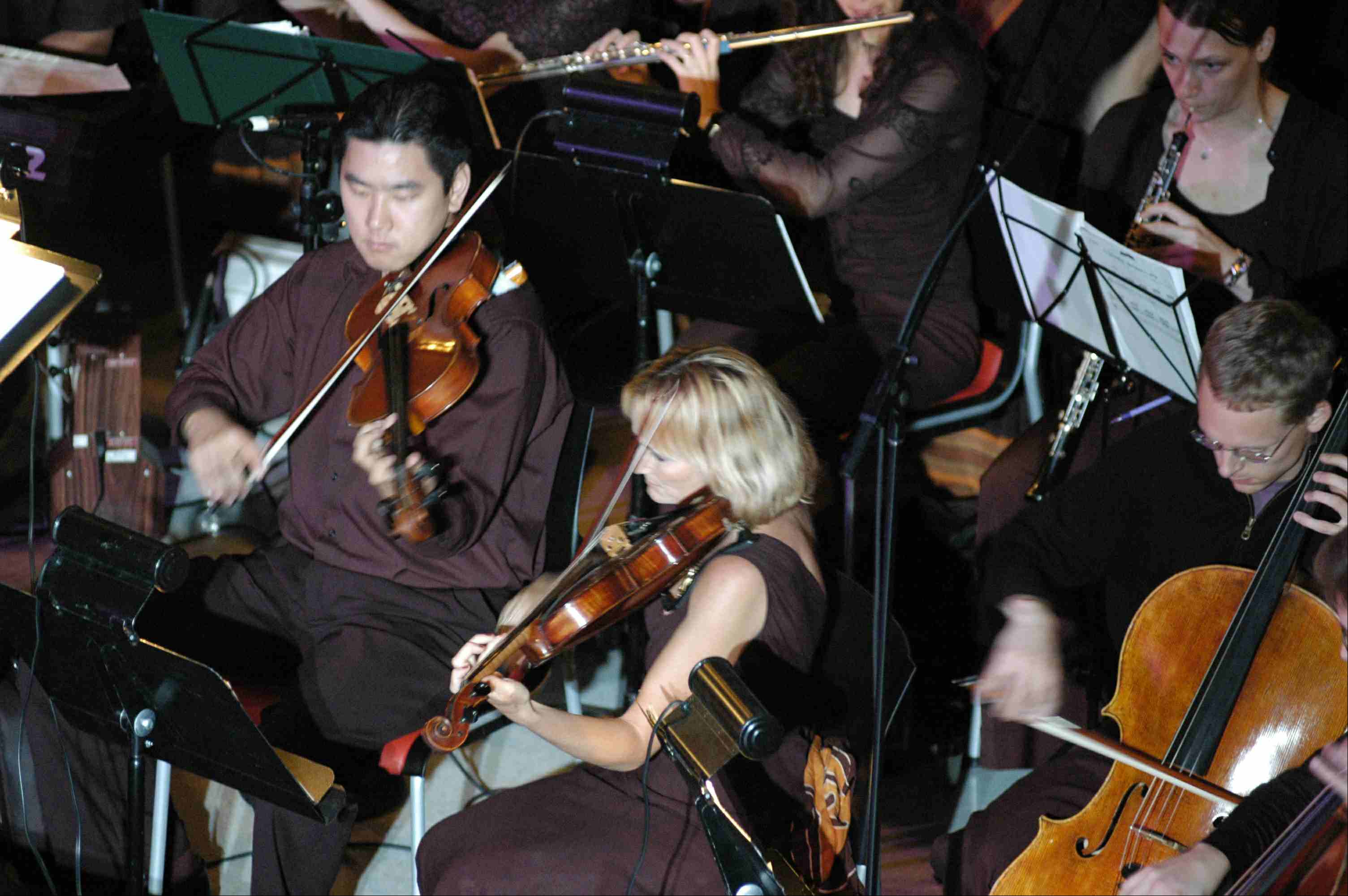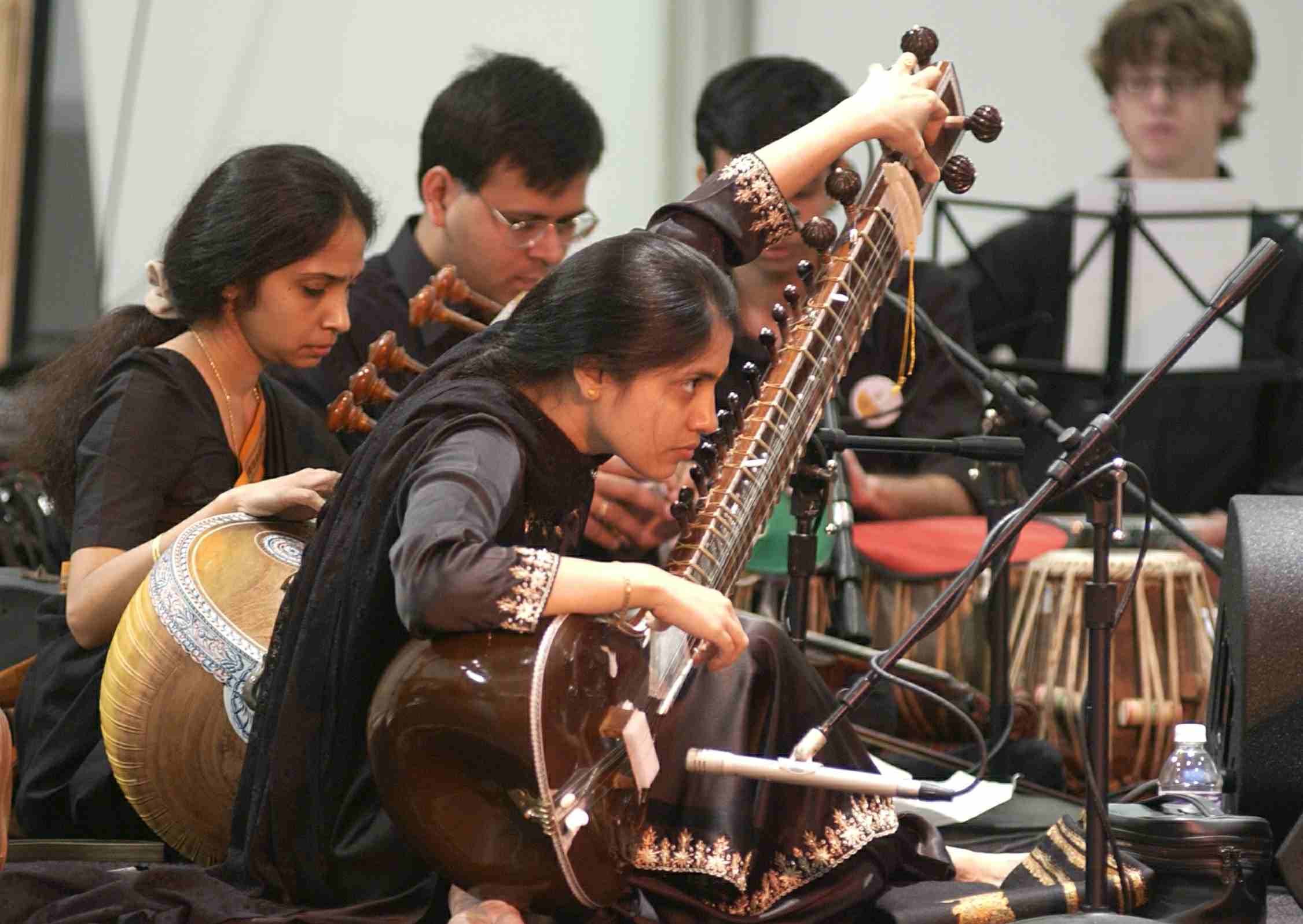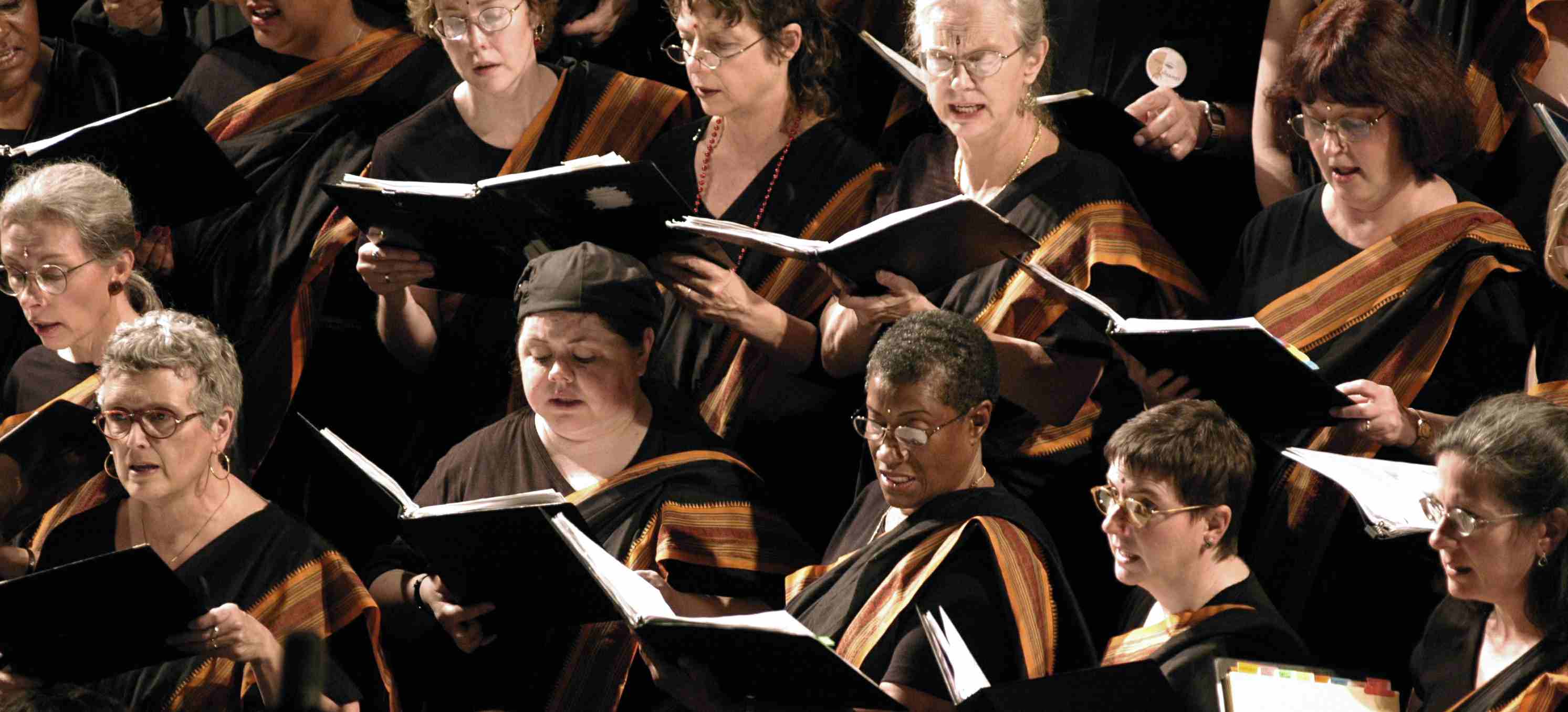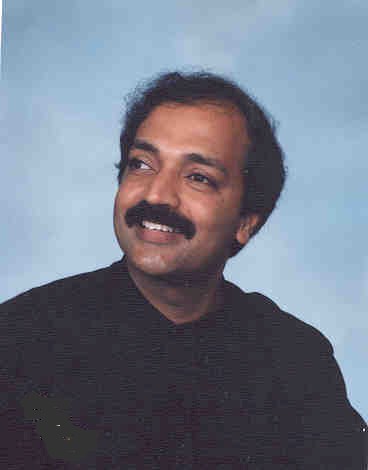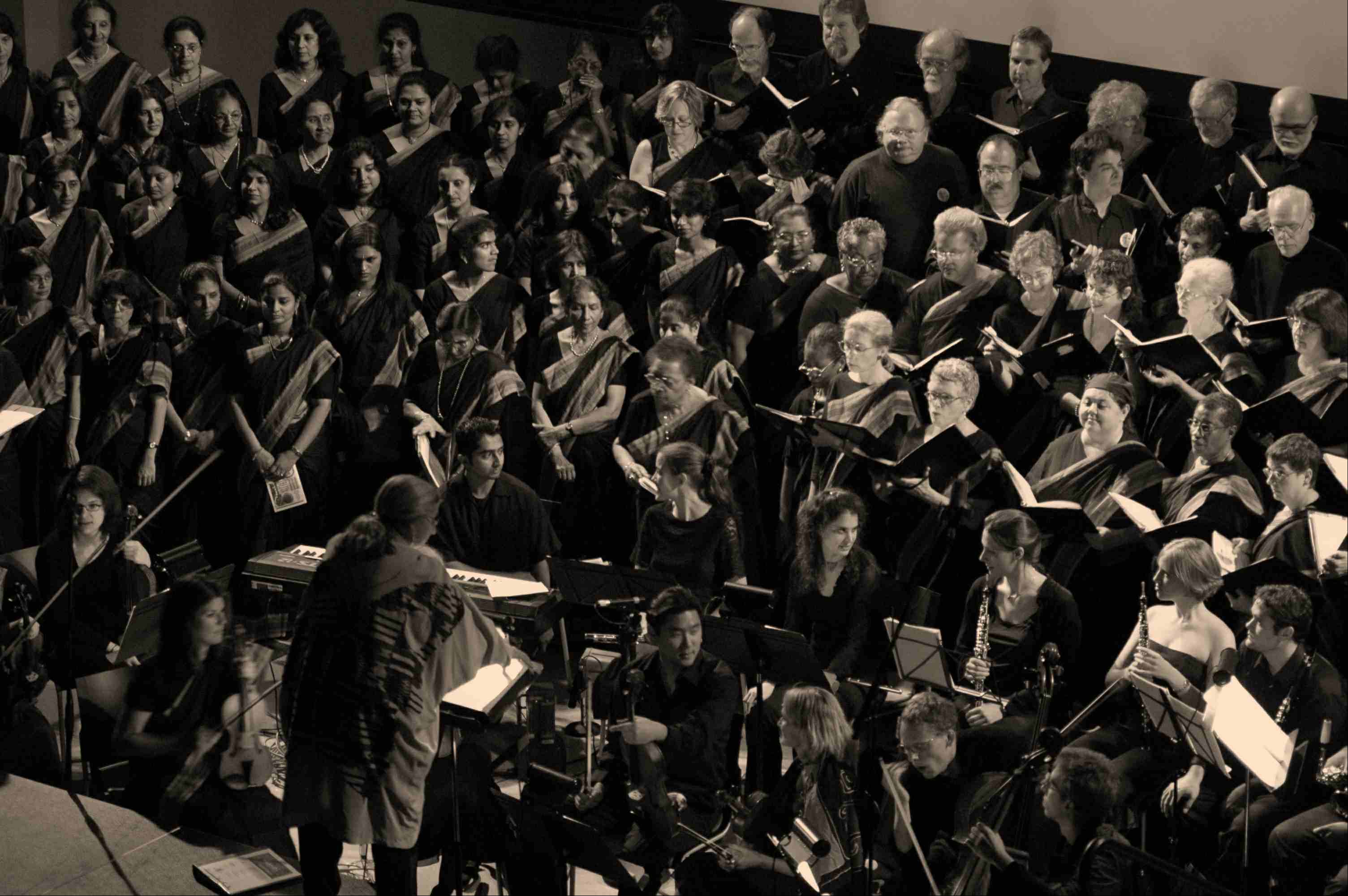KANNIKS KANNIKESWARAN
The composer
New: Upcoming concert -- The Sound of Seasons
Kanniks is a prolific composer and lyricist and his compositions spanning a fifteen year period cut across musical genres. Firmly grounded in Indian classical music, Kanniks fully uses the expressive capabilities of rAga based music in conjunction with orchestral elements inspired by Western and other world music forms. In recognition of his talents as a composer, Kanniks was awarded the prestigious Individual Artist Fellowship (Composer) by the Ohio Arts Council.
The range of music covered by Kanniks is phenomenal; the contrast between his folk music for ghumar and his 'Peace and Joy' hymn or the kumudakriya tillana or the choral/orchestral arrangement of gangAshtakam is striking.
In the classical domain, his compositional forms cover the traditionally known forms such as the kriti, tillAna, tarAna, dhrupad, gIta, kavuthuvam, swarajati as well as innovative forms such as the swarapada. Kanniks has several kritis, gItas and swarapadas in sanskrit and his native Tamil to his credit.
His arrangement of verses from the Bhagwad Gita in the rAga shrI with choral harmony and crisp harmony has resulted in the sublime yet terrifying ashAnti oratorio.
His choral arrangement of madhurAshtakam is a totally fresh presentation of the beautiful sanskrit text. Set in the major scale, with an almost baroque feel, this suite in five movements was choreographed in the western classical ballet dance form in Kanniks' musical production Basant in 1994.
In The Blue Jewel in 1996, Kanniks used chants in various languages such as Sanskrit and Hebrew with elements of choral and orchestral harmony. The Blue Jewel was also inspired by various other World Music forms.
"I was overwhelmed by the freshness and boundless expansion of your music. You used European harmonic structures for meoldic fabrics based on Hindu motifs woven into a polyphonic tapestry. Be blessed for your enormous enrichment you have brought with your art, to the city we both reside...."
Professor Bonia Shur, Composer, Director of Liturgical Arts, Hebrew Union College, CinncinnatiThe music that Kanniks composed for Jeevan Taal in 1998 for some of the greatest names in classical and contemporary Indian dance and choreography - Mallika Sarabhai and Mrinalini Sarabhai used folk melodies crisply couched in synergistic western orchestration.
"The synthesis of the east and the west was evident in the pulsating music, where folk music was accompanied by a synthesizer and other western instruments. This is truly the theme of this festival, what this festival aims at - making a platform for all countries to become one"
- The Asian Age, January 1999 (about Jeevan Taal)Kanniks has composed jingles, background scores for television serials and short films. A notable example is the work he did for a Malayalam Serial broadcast on Asianet - all over South Asia and the Middle East. Kanniks was recently interviewed on the far reaching tamil television network - Sun TV, where he shared his experiences in creating orchestral harmony for rAga based music themes.
Kanniks has also penned lyrics and composed several songs in the contemporary Indian film idiom. In 1998, he worked with lyricist Va.Ve.Su of Chennai and created a recording for Doordarshan Chennai - of music in the Indian film idiom with leading artists from the Tamil film industry.
Veteran Indian classical musician Lakshmi Shankar performed the music of Shanti in March 2004. In her own words, "Your compositions are wonderful and your command over both the Hindustani and the Karnatic idiom is very commendable" .
Shanti featured chants, musical arrangements of ancient chants, free form chants, tarAnas, oratoria, gats, mallAris and hymns and presented rAgas such as vAgadIshwari, bhatiyAr in an orchestrated context. It was in recognition of the vision of the project that the Ohio Arts Council overwhelmingly supported Shanti with a grant.
"It is amazing that Kanniks has communicated the essence of rAgas such as kalyANi to a western choir and an orchestra through a written score and has had sanskrit slokas performed in these rAgas with perfectly syntactic choral harmony... Tamilnadu will soon get to know Kanniks Kannikeswaran and his amazing music.."
Writer Sujatha - Highly regarded author and script writer (Tamil) - in leading Tamil weekly Ananda Vikatan, August 2005 (about Shanti).In Tiruvarangam, released in 1992 Kanniks has composed, orchestrated and sung the ancient Tamil verses of the1st millennium CE. In a sequence of classical rAgas such as mOhana, kurinji, bahudAri, latAngi etc. Tiruvarangam presents simple yet elegant melodies, that are easily hummable. "The essence of the verses jump out at you in this musical framework".
"Tiruvarangam is a masterpiece....No other song can evoke the same sublime feeling as amalanAdi pirAn in tiruvarangam"
Crazy Mohan, Leading Playwright and dialogue writer, Chennai, IndiaIn Skanda (2004) Kanniks presents hymns from the Tevaram in their traditional tunes as well as contemporary musical arrangements of the Tiruppukazh hymns of the 2nd millennium CE. Covering rAgas such as mAlkauns, nAdanamakriya, kAmod, yaman kalyAN and more, Skanda is literally a journey through the Murugan temples of Tamilnadu.
The snake concerto composed by Kanniks and performed by the Cincinnati Symphony Orchestra is an orchestral composition inspired by Indian folk melodies.
Aadavallaanin Aindu Sabhaigal composed in 1998 features tillaanas in rAgas such as kumudakriya, rasikapriya. Other intricate tillaanas composed by Kanniks in rAgas such as mEgh, shudh sArang etc. have been used by dancers in stage performances.
In addition to the above Kanniks has a prolific collection of un-recorded compositions as well as musical arrangements of ancient Tamil and sanskrit text.
